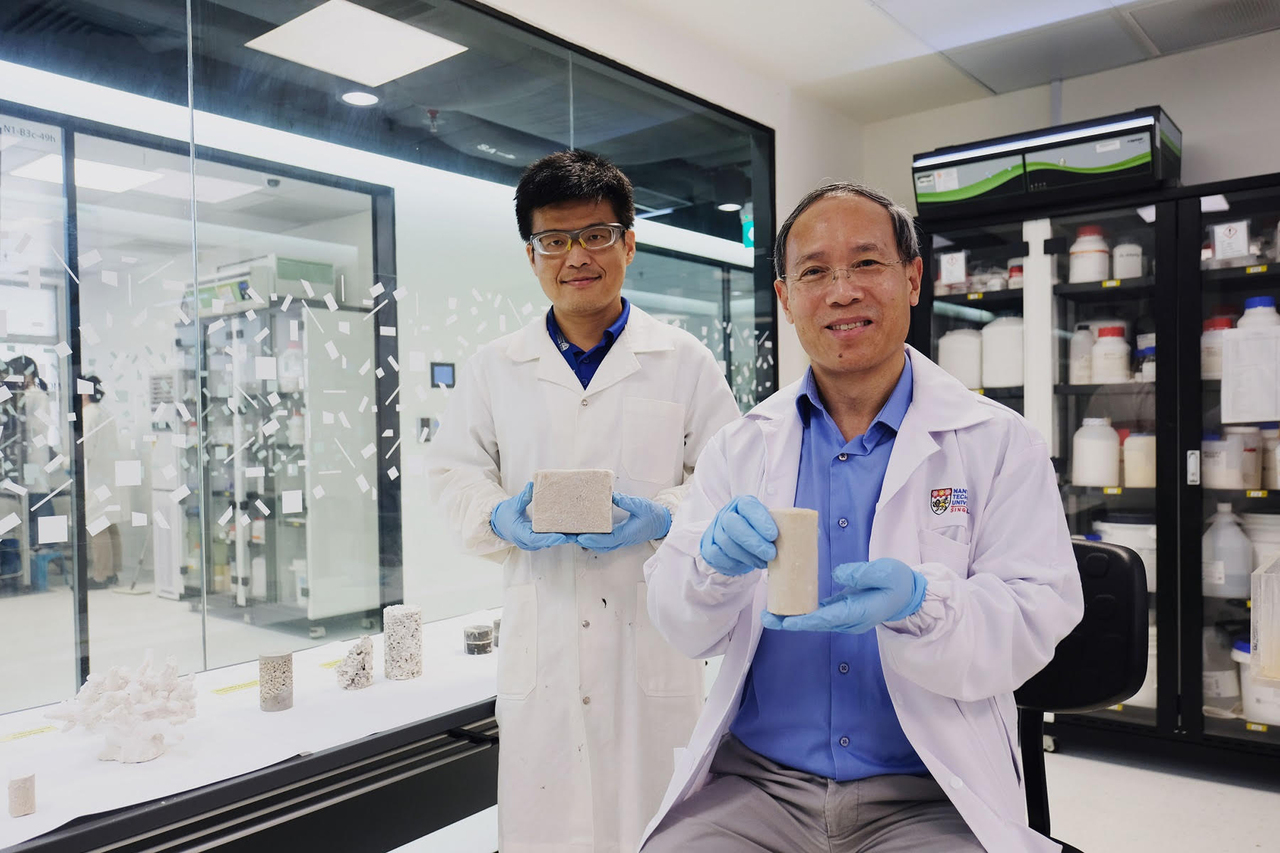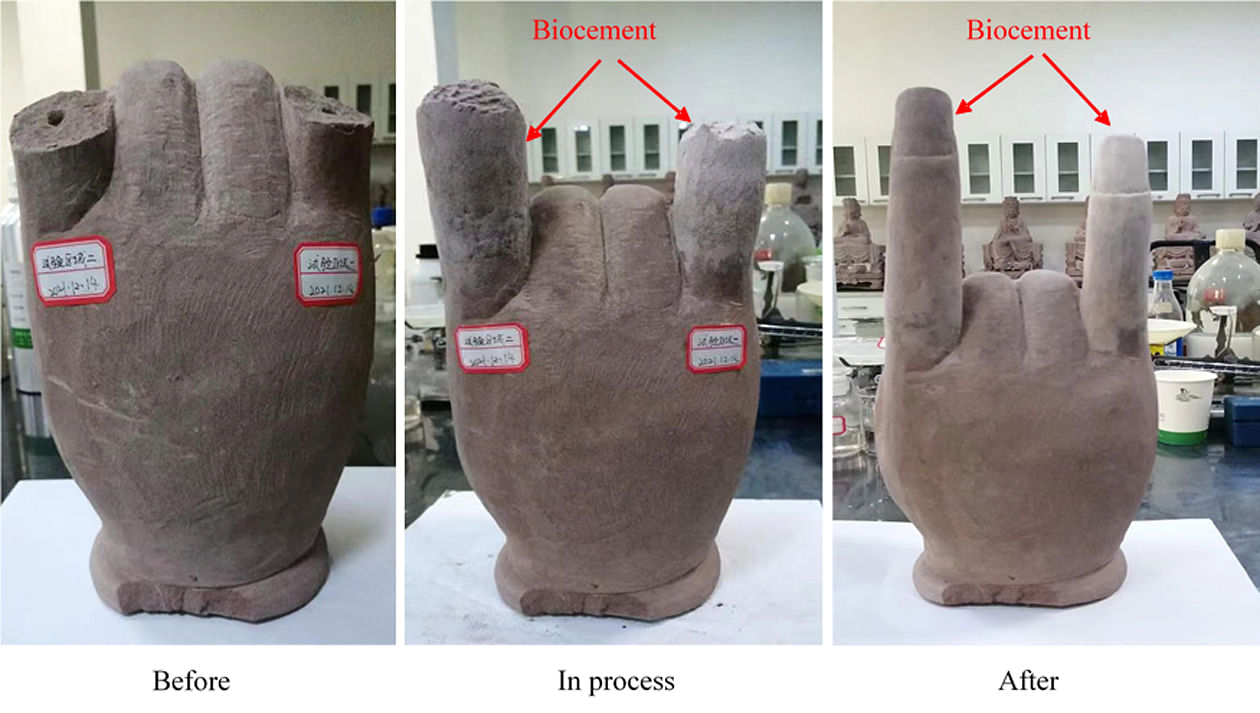NTU scientists turn urine, industrial waste into renewable cement
Sign up now: Get ST's newsletters delivered to your inbox

Dr Wu Shifan (left), senior research fellow at NTU's Centre for Urban Solutions and Professor Chu Jian, director of the Centre for Urban Solutions led the NTU research team.
PHOTO: NTU
Soh Pei Xuan, Ang Qing
Follow topic:
SINGAPORE - Scientists from Nanyang Technological University (NTU) have found a way to transform urine and industrial waste into a renewable type of cement.
Biocement has the potential to be used in construction projects such as reducing beach erosion or building freshwater reservoirs in a desert, NTU said in a statement on Friday (May 13).
It can also be used to seal cracks and repair monuments like rock carvings and statues.
Producing biocement entirely made from waste materials paves the way for more sustainable and cost-efficient construction projects, as urine and waste are free and the high temperatures needed for traditional cement-making methods are not required in the production of biocement, the NTU team said.
Professor Chu Jian, chair of the School of Civil and Environmental Engineering, who led the NTU research team, said: "Our research makes biocement even more sustainable by using two types of waste as its raw materials. In the long run, it will not only make it cheaper to manufacture biocement, but also reduce the cost involved for waste disposal."
The project marks the culmination of four years of research and development that began in 2017, when the researchers noticed the high cost of transporting carbide sludge - a waste material from producing acetylene gas that is commonly used for welding - from Singapore to Malaysia.
"Instead of transporting carbide waste and paying costly transport fees, we can put the carbide waste to good use while reducing waste," said Dr Yang Yang, a team member and former NTU PhD student and research associate at the Centre for Urban Solutions, who is currently a post-doctoral fellow at Chongqing University.
The NTU team's biocement production process harnesses a reaction that occurs when industrial carbide sludge is combined with acid, urine and bacteria.
When the precipitate is added to soil, it bonds soil particles together and fills the gaps between them, creating a compact mass of soil.
This forms a strong, sturdy and less permeable block of biocement.
Soil reinforced with biocement can withstand compression of up to 1.7 megapascals, which is higher than that of the same soil treated using an equivalent amount of cement.
Unlike traditional cement-making processes, the production of biocement generates less carbon emissions, said Prof Chu, who is also director of NTU's Centre for Urban Solutions.
According to Prof Chu, traditional cement-making processes burn raw materials at very high temperatures of more than 1,000 deg C, which can produce a lot of carbon dioxide.
In contrast, the production of biocement can be done at room temperature, making it a less energy demanding and carbon-neutral process, he said.
The process does away with the need for mining limestone - a finite resource that is a key ingredient in cement production.
"By extracting calcium from carbide sludge, we make the production more sustainable as we do not need to use materials like limestone which has to be mined from a mountain," said Dr Yang.
The colourless quality of the precipitate also allows the original colour of soil, sand or rock to be preserved when biocementation - the process of turning soil into cement with the precipitate - occurs.
This means that old rock monuments and artefacts can be restored without altering their colour.
For example, Dr Yang has used biocement to repair old Buddha monuments in China, such as broken-off fingers of a Buddha's hand, by sealing gaps in the cracks.

The test specimen of a Buddha hand was provided by Dazu Rock Carvings, a UNESCO World Heritage Site in China.
PHOTO: NTU
In collaboration with several national agencies such as the National Parks Board, the NTU team is currently trialling the biocement at East Coast Park to prevent beach erosion.
The NTU team is also looking into large-scale applications of the biocement, such as repairing road cracks or sealing gaps in underground tunnels to prevent water seepage.
The biocement is also being considered for use as cultivation grounds for coral reefs as coral larvae like to grow on calcium carbonate, which is a major component of the biocement.

